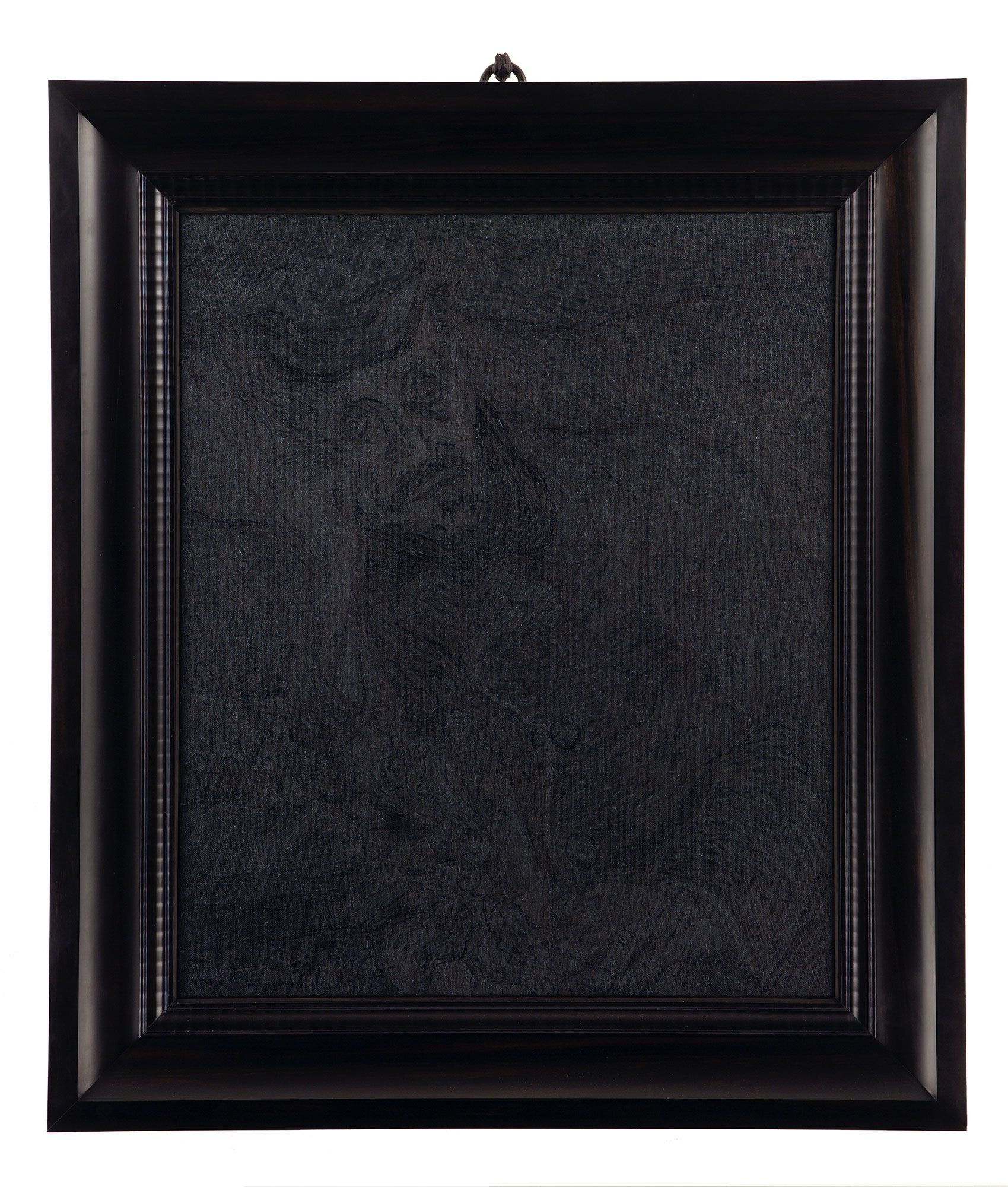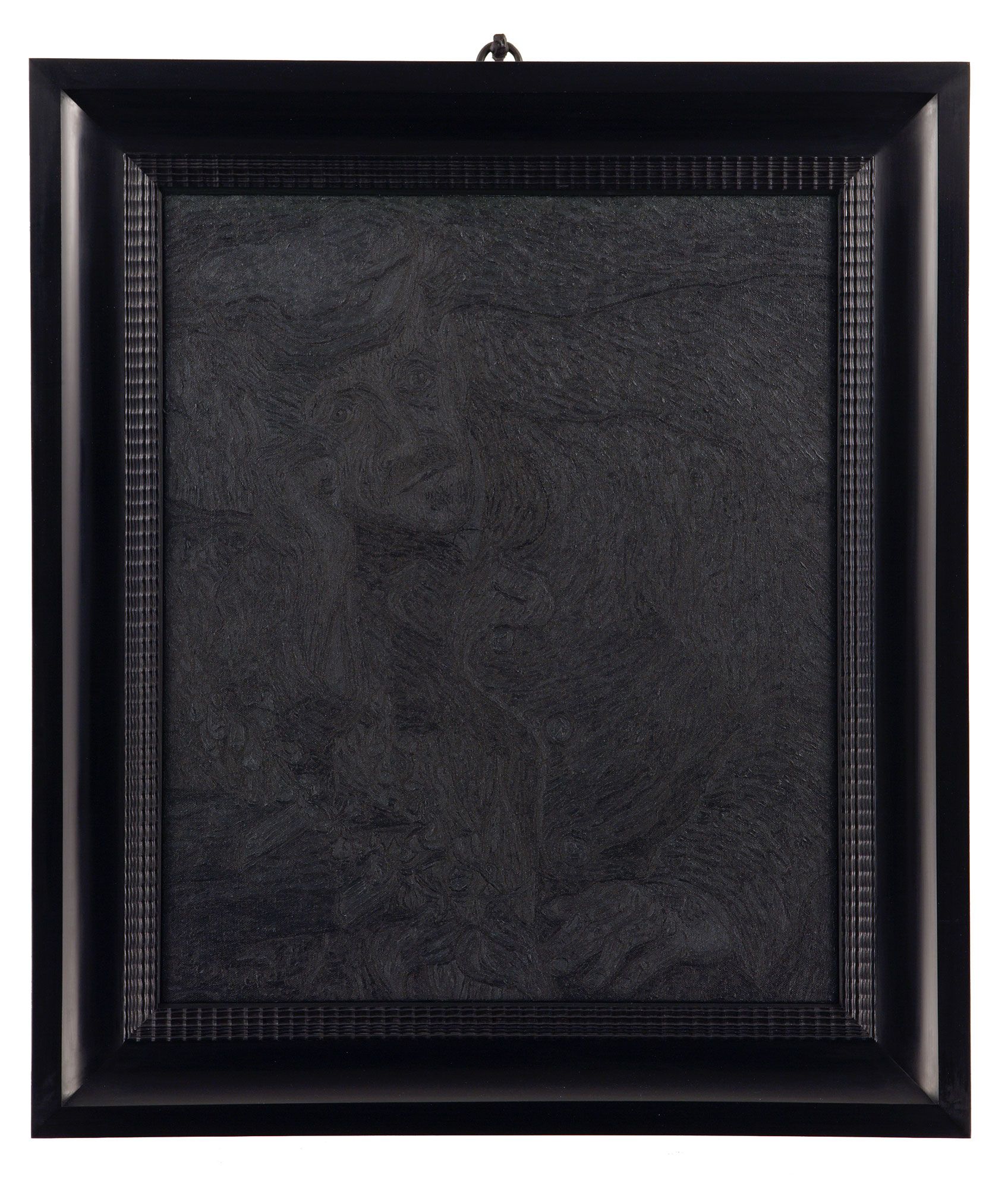In 1890, Van Gogh painted Dr. Paul Gachet, his physician and companion in melancholy. At first a source of comfort, Gachet came to symbolise something darker — “the blackest man I ever knew,” Van Gogh wrote. Perhaps it was the resemblance between them, or the echo of shared affliction, that proved unbearable.
In these reimaginings, the familiar portrait is rendered in deep black, drained of colour but not emotion. Behind museum glass, the paintings reflect like mirrors. The image doesn’t emerge so much as hover — elusive, suspended, present and receding.
The surface becomes both a veil and a screen. The viewer catches glimpses of their own reflection in the dark varnish, folded into the act of looking. The painting becomes less a portrait than a portal: one that returns the gaze not with clarity, but with endless longing.
Over time, this mirrored surface has acquired new associations — most notably with the smartphone. A device of infinite reach, infinite repetition. The “black mirror” has become shorthand for desire without resolution. These works share that quality: a gesture of intimacy that remains forever just out of reach.
The Blacker Gachet is not a copy, and not a tribute. It is a distillation — of grief, resemblance, and the impossibility of consolation.
Exhibited: The Bigger Victory, Haunch of Venison Gallery , London. 2005
The Royal Academy Summer Exhibition. 2006


